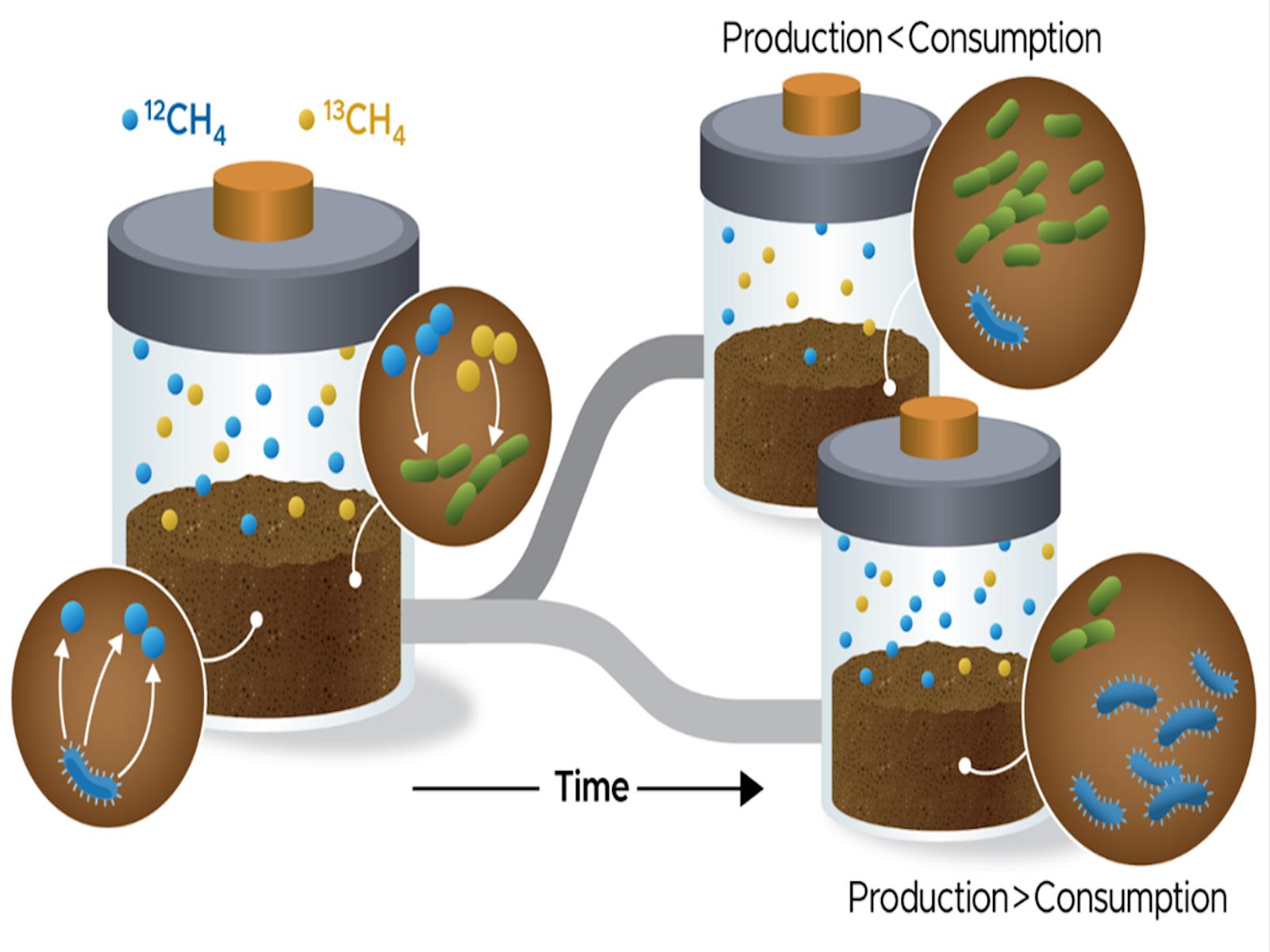New R Package Makes Disentangling the Components of Biogeochemical Fluxes Easier
Using a stable isotope technique, called pool dilution, is crucial for obtaining essential Earth system data

In soil, microbes produce and consume methane. Using a technique called pool dilution, researchers can separate the rate of methane production and consumption from the net rate. This is done using stable isotope tracers (13CH4) and optimization equations.
(Image by Nathan Johnson | Pacific Northwest National Laboratory)
The Science
Biogeochemical processes, often called fluxes, recycle materials through the Earth system. Underlying productive and consumptive processes control the flux magnitude. Typically, these two components cannot be separated and only the net flux is measured. Using stable isotope tracers, chemically identical, microscopically “tagged” molecules can allow researchers to calculate the two gross components, but the equations are difficult to navigate. This study presents a new R package to address complicated equations in this system.
The Impact
Earth system models are used to answer questions about both current and future environmental conditions. Despite the urgent need for gross biogeochemical flux data to improve model performance, such data is rarely collected. A key technique for collecting gross flux data is stable isotope pool dilution, which first gained prominence in the 1990s but remains under-utilized, in part, due to relative inaccessibility of the calculations involved. PoolDilutionR is a user-friendly software package that brings the theory of pool dilution into the 21st century by allowing researchers to process their pool dilution data easily in one of the most popular software languages in the field. This open-source tool will allow wider application of pool dilution and easier generation of critical Earth system data.
Summary
Despite being a powerful method for quantifying gross biogeochemical transformation rates, isotopic pool dilution is seldom employed. Pacific Northwest National Laboratory offers a user-friendly R package that optimizes rates and fractionation constants using standard pool dilution time series data, featuring comprehensive documentation and examples for seamless integration. Easily integrated into analytical pipelines to facilitate broader implementation of pool dilution methods.
PNNL Contact
Vanessa Bailey,
Pacific Northwest National Laboratory,
vanessa.bailey@pnnl.gov
Funding
This research is based on work supported by COMPASS-FME, a multi-institutional project supported by the Department of Energy, Office of Science, Biological and Environmental Research program as part of the Environmental System Science program.
Related Links
Web home for software: https://github.com/COMPASS-DOE/PoolDilutionR
Published: February 15, 2024
Morris K.A., B. Bond-Lamberty, D.J. Day, K.F. Patel, S.C. Pennington, N.D. Ward, and J.C. Von Fischer. 2023. “PoolDilutionR: an R package for easy optimization of isotope pool dilution calculations.” Methods in Ecology and Evolution 14, no. 11:2728-2737. doi:10.1111/2041-210X.14223